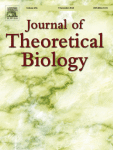View Item
- xmlui.general.dspace_homeCentros e Institutos de InvestigaciónCICVyA. Centro de Investigación en Ciencias Veterinarias y AgronómicasInstituto de GenéticaArtículos científicosxmlui.ArtifactBrowser.ItemViewer.trail
- DSpace Home
- Centros e Institutos de Investigación
- CICVyA. Centro de Investigación en Ciencias Veterinarias y Agronómicas
- Instituto de Genética
- Artículos científicos
- View Item
Understanding the intracellular-to-extracellular localization switch of polyhydroxybutyrate polymerase in pseudomonas backgrounds as a microevolutionary process
Abstract
After gene duplication, paralogous genes evolve independently, and consequently, the new proteins encoded by these duplicated genes are exposed to changes in their subcellular location. Although there are increasing evidence that phylogenetically related proteins play different functions in different subcellular compartments, the number of evolutionary steps required for the emergence of a novel protein with a novel subcellular localization remains
[ver mas...]
After gene duplication, paralogous genes evolve independently, and consequently, the new proteins encoded by these duplicated genes are exposed to changes in their subcellular location. Although there are increasing evidence that phylogenetically related proteins play different functions in different subcellular compartments, the number of evolutionary steps required for the emergence of a novel protein with a novel subcellular localization remains unclear. Regarding this intriguing topic, here we examine in depth our previous reports describing both intracellular and extracellular polyhydroxybutyrate polymerases (PhaC) in the Pseudomonadales group. The recapitulation of the intracellular-to-extracellular localization switch of PhaC in these strains shows a gradual evolution from a simple cytosolic PhaC form to a complex extracellular PhaC form specifically secreted via the type 1 secretion system. This gradual evolution includes several adaptive and pre-adaptive changes at the genomic, genetic and enzymatic levels, which are intimately related to the lifestyle of organisms during the evolution of protein localization. We conclude that the protein localization switch can be an extremely complex process in nature.
[Cerrar]

Author
Stritzler, Margarita;
Berini, Carolina Andrea;
Jozefkowicz, Cintia;
Soto, Gabriela Cinthia;
Ayub, Nicolás Daniel;
Fuente
Journal of Theoretical Biology 456 : 29-33 (Noviembre 2018)
Date
2018-11
Editorial
Elsevier
ISSN
1095-8541
Formato
pdf
Tipo de documento
artículo
Palabras Claves
Derechos de acceso
Restringido
 Excepto donde se diga explicitamente, este item se publica bajo la siguiente descripción: Creative Commons Attribution-NonCommercial-ShareAlike 2.5 Unported (CC BY-NC-SA 2.5)
Excepto donde se diga explicitamente, este item se publica bajo la siguiente descripción: Creative Commons Attribution-NonCommercial-ShareAlike 2.5 Unported (CC BY-NC-SA 2.5)

